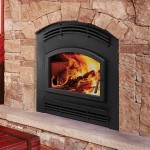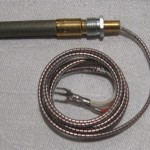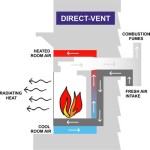Outdoor Porch Fireplace Ideas: Creating a Cozy and Inviting Outdoor Space
An outdoor porch fireplace can transform a simple porch into a relaxing and inviting extension of the home. It provides warmth, ambiance, and a focal point for social gatherings. When considering an outdoor porch fireplace, numerous factors come into play, including design, materials, fuel type, and safety considerations. This article explores various outdoor porch fireplace ideas, offering insights into creating a functional and aesthetically pleasing outdoor living space.
Choosing the Right Design and Style
The design and style of an outdoor porch fireplace should complement the existing architecture of the house and the overall aesthetic of the outdoor area. There are several design options available, ranging from traditional masonry fireplaces to modern, prefabricated models.
Traditional Masonry Fireplaces: These fireplaces are typically constructed from brick, stone, or concrete blocks. They offer a classic and timeless appeal, and can be customized to match the home's exterior. Masonry fireplaces often require professional construction and are a more permanent installation. They provide a significant heat output and create a robust focal point.
Prefabricated Fireplaces: These are pre-built units that can be installed more quickly and easily than masonry fireplaces. They come in a variety of styles, from rustic to contemporary, and are often made from materials like concrete, metal, or composite materials. Prefabricated fireplaces are generally less expensive than masonry options and offer greater flexibility in terms of placement and design.
Freestanding Fireplaces: Offering the greatest flexibility, freestanding fireplaces can be easily moved and positioned. Often made of metal and fueled by propane or natural gas, they provide warmth and ambiance without the need for permanent installation. These are ideal for porches where a more temporary or adaptable heating solution is desired.
Fire Pits Integrated into Porch Design: While technically not a fireplace, a fire pit can be integrated into the porch design, creating a similar effect. This can involve building a raised fire pit area or incorporating a fire pit into the porch flooring. Consideration must be given to proper ventilation and safety measures when using a fire pit under a covered porch.
Consider the overall style of the home when selecting a design. A rustic stone fireplace might be ideal for a country-style home, while a sleek, modern fireplace could better suit a contemporary design. The size of the porch also plays a crucial role; a large fireplace can easily dominate a small porch, while a smaller fireplace may be insufficient for a large, open space.
Selecting the Appropriate Materials and Fuel Type
The materials used in the construction of an outdoor porch fireplace should be durable, weather-resistant, and aesthetically pleasing. The fuel type will influence the design and functionality of the fireplace, and it is imperative to match the fuel to the structure for safety.
Material Options: Brick, stone, and concrete are common choices for masonry fireplaces, offering durability and a classic look. Metal, particularly stainless steel, is often used for prefabricated and freestanding fireplaces due to its resistance to rust and corrosion. Composite materials can also be used for prefabricated units, providing a lightweight and weather-resistant option.
Fuel Type Considerations: The choice of fuel type has significant implications for the design, installation, and operation of the fireplace.
Wood-Burning Fireplaces: These fireplaces offer a traditional ambiance and a natural, crackling sound. They require a chimney for proper ventilation and adherence to local regulations regarding wood-burning appliances is necessary. Wood-burning fireplaces can generate significant heat and require a readily available source of firewood. Consider the environmental impact of wood burning and choose sustainably sourced firewood.
Gas Fireplaces (Natural Gas or Propane): Gas fireplaces are convenient and easy to operate, providing instant heat with the flick of a switch. They require a gas line connection and proper ventilation, but they produce fewer emissions than wood-burning fireplaces. Natural gas fireplaces are connected to the home's natural gas line, while propane fireplaces require a propane tank. The choice between natural gas and propane depends on the availability of a natural gas line and personal preference.
Electric Fireplaces: While not true fireplaces in the traditional sense, electric fireplaces offer a convenient and low-maintenance option for adding ambiance and supplemental heat to an outdoor porch. They require only an electrical outlet and produce no emissions. Electric fireplaces are typically less expensive than wood-burning or gas fireplaces, but they may not provide the same level of heat.
When selecting materials and fuel type, consider the local climate, the availability of fuel sources, and the desired level of maintenance. For example, in areas with frequent rainfall, it is important to choose water-resistant materials. In areas with strict air quality regulations, gas or electric fireplaces may be the preferred option.
Addressing Safety and Regulations
Safety is paramount when installing and operating an outdoor porch fireplace. Adherence to local building codes and regulations is crucial to ensure the safety of the home and its occupants. Proper ventilation, clearance from combustible materials, and fire safety equipment are essential considerations.
Ventilation: Wood-burning and gas fireplaces require proper ventilation to prevent the buildup of harmful gases such as carbon monoxide. A chimney or vent flue is essential for directing exhaust away from the porch and the home. Ensure that the chimney or vent flue is properly sized and installed according to manufacturer specifications and local building codes.
Clearance from Combustible Materials: Maintain adequate clearance between the fireplace and any combustible materials, such as wood framing, furniture, and plants. Consult local building codes for specific clearance requirements. Use non-combustible materials, such as brick, stone, or metal, to surround the fireplace and protect nearby surfaces from heat. Sparks from a wood-burning fireplace can ignite nearby combustible items. Regular maintenance, including chimney cleaning, is essential to prevent creosote buildup, which can cause chimney fires.
Fire Safety Equipment: Keep a fire extinguisher readily accessible near the fireplace. Ensure that all occupants of the home are familiar with the proper use of the fire extinguisher. Install smoke detectors and carbon monoxide detectors in the home to provide early warning of potential hazards.
Local Building Codes and Regulations: Before installing an outdoor porch fireplace, consult with local building officials to obtain the necessary permits and ensure compliance with all applicable codes and regulations. These regulations may address issues such as fireplace size, chimney height, fuel type restrictions, and setback requirements from property lines. Failure to comply with local building codes can result in fines and the removal of the fireplace. Consider proximity to neighbors when positioning the fireplace to avoid smoke-related issues. Wind direction may need to be assessed to prevent blowing smoke from encroaching on neighboring properties.
By carefully considering safety and regulations, homeowners can enjoy the warmth and ambiance of an outdoor porch fireplace without putting themselves or their property at risk.
Beyond these central themes, consider incorporating other design elements to enhance the outdoor porch fireplace. Consider built-in seating around the fireplace to create a comfortable and inviting gathering space. Integrate storage for firewood, propane tanks, or other fireplace accessories. Add lighting to the porch to create a warm and inviting ambiance. Use outdoor-rated furniture and decor to complement the fireplace and create a cohesive outdoor living space. The addition of outdoor rugs, cushions, and throws can create a cozy and comfortable atmosphere.
Think about the seasonal use of the porch. In colder climates, consider adding windbreaks or enclosures to protect the porch from the elements. This will extend the usability of the outdoor space into the shoulder seasons. In warmer climates, focus on providing shade and ventilation to keep the porch cool and comfortable. Ceiling fans and retractable awnings can help regulate the temperature and create a more enjoyable outdoor experience.
Ultimately, the best outdoor porch fireplace is one that meets the homeowner's specific needs and preferences. By carefully considering design, materials, fuel type, safety, and regulations, homeowners can create a cozy and inviting outdoor space that they can enjoy for years to come. Careful planning and execution will yield a valuable addition to the home and enhance the overall outdoor living experience.

Outdoor Fireplace Design Ideas Judd Builders Asheville Nc

Amazing Fire Pit Outdoor Fireplace Ideas Natural Brick Stone Depot
:max_bytes(150000):strip_icc()/bring-holidays-outside-x-50f80e4865984b36b603a1de82d2938b.jpg?strip=all)
23 Outdoor Fireplace Ideas For A Glowing Retreat

Outdoor Fireplace Design Ideas Judd Builders Asheville Nc

10 Outdoor Fireplace Ideas You Ll Want To Copy Bob Vila

75 Porch With A Fireplace Ideas You Ll Love February 2024 Houzz
:max_bytes(150000):strip_icc()/screened-porch-living-room-x-5b0a850dfe1d4c9d8a304b302d1b638b.jpg?strip=all)
23 Outdoor Fireplace Ideas For A Glowing Retreat

How We Built Our Outdoor Fireplace On Patio Porch Life With Neal Suz Backyard

53 Most Amazing Outdoor Fireplace Designs Ever Modern Patio

Outdoor Gas Wood Burning Fireplace Backyard Firepits
Related Posts








